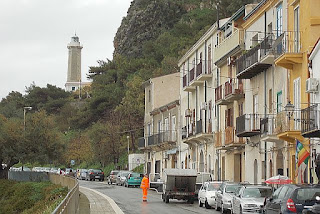 |
| Many favorite villages are coastal towns (Taylor) |
Savvy travelers
are always searching for hidden gems to satisfy their wandering curiosity. Many
destinations offer countless unknown charming spots that can capture your heart,
but no country in the world does it better than Italy
 |
| Dramatic Amalfi Coast (Taylor) |
In a recent
edition of the online version of "Conde Nast Traveler" the popular
magazine listed the Italy
Today we offer five of the ten with the other
five to follow next week in the hope they will either establish new places for
you to visit or allow you to bust your buttons with pride to learn that you,
too, "discovered" them on your own.
 |
| Saluzzo was mentioned in two major literary works (wikipedia.org) |
Saluzzo: Though it may sound
like one of the families from "The Godfather", the quiet medieval village of Saluzzo
is situated just an hour south of Turin
Tiny as it may
be, Saluzzo is the setting in at least two major literary works; Boccaccio used
it in the final story of the "Decameron" and it was also the site of
the "Clerk's Tale" in Chaucer's "Canterbury Tales.''
 |
| Cathedral of the Virgin Mary in Saluzzo (en.wikipedia.org) |
Famous for it
red-tiled roofs, bell towers with their ancient spires and the snow-capped
Cottian Alps, the city of Saluzzo is built on a hill overlooking a huge, well-cultivated
plain that is chock full of natural resources.
 |
| Collodi eases down its hillside live a river of buildings (en.wikipedia.org) |
Collodi: All you need to
know about Collodi is that it is famous for being the home of Pinocchio's creator
Carlo Collodi. Dating to the 12th century when the castle was built for
defense, Collodi cascades down a hillside like a stream of stone.
This lovely
medieval town which is situated in Tuscany between
Florence and Pisa
The Garzoni Gardens
 |
| Castelluccio is famous for its rainbows of color (en.wikipedia.org) |
Castelluccio: At 5,000 feet
above sea level, Castelluccio is the highest community in the Apennines .
Though relatively unknown to every day tourists, skiers and trekkers are
familiar with the village during the appropriate seasons.
The town dates
from the 13th century but the Romans settled there much earlier. Two major
seismic events in Central Italy in 2016 and
earlier this year, destroyed more than 50% of the settlement but it has
recovered nicely and is once again a thriving agricultural destination.
 |
| Fields of wildflowers add to the charms of Castelluccio (en.wikipedia.org) |
Castelluccio is
famous for its lentils and fields which create a kaleidoscope of colors during the
spring/summer "flowering season." Arguably the most beautiful village
in the Apennine Mountain Range, Castelluccio also features numerous picturesque
piazzas that compliment its beautiful church.











0 comments:
Post a Comment